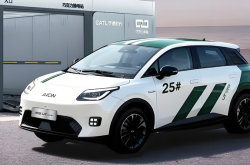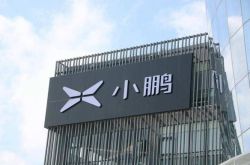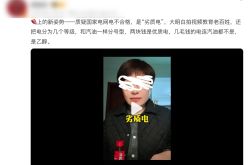2024 China New Energy Vehicle Industry Review
![]() 01/20 2025
01/20 2025
![]() 621
621
Knockout Stage Intensifies, Embracing AI Actively
Author | Shengma Finance Xin Zimo
In 2024, China's automobile market was fiercely competitive. Following an industry-wide price war and intense internal competition early in the year, several auto companies stood out with exceptional market performance, delivering remarkable results. However, many others fell by the wayside amidst this cutthroat competition. For the new energy vehicle market, the process of survival of the fittest significantly accelerated.
Amidst the competition, the battle for technology also intensified, with large AI models becoming a key factor in industry-wide competition. Under the new circumstances, auto companies invested heavily, striving to gain the upper hand with intelligent driving capabilities. Looking at the overseas market, despite facing challenges such as trade barriers, Chinese new energy vehicle companies remained committed to "going global." Under multiple strategic maneuvers, the overseas market also witnessed new developments and changes.


'Survival of the Fittest' Accelerates
Throughout the year, some auto companies delivered impressive year-end results, while others bid farewell to 2024 with regrets.
In 2024, BYD sold a total of 4.2721 million new energy vehicles, marking a 41.26% year-on-year increase and breaking SAIC's 18-year streak as the market leader. Overseas sales of new energy vehicles reached 417,200 units, a 71.86% increase compared to 2023. BYD retained its title as the sales champion of auto companies in the Chinese market, the sales leader of brands in the Chinese market, and the sales leader of the global new energy vehicle market, successfully topping the global rankings.
Li Auto surpassed 500,000 vehicle sales in 2024, achieving this milestone in just five years and setting an industry record for the fastest luxury automotive brand to reach 500,000 annual sales in the Chinese market. Throughout 2024, NIO delivered a total of 221,970 new vehicles, a 38.7% year-on-year increase. However, in the third quarter of 2024, NIO reported a net loss of 5.06 billion yuan, further expanding its losses.

Technology giants such as Xiaomi and Huawei have ventured into the market, becoming the focus of attention. In 2024, Xiaomi Automobile quickly gained market share through the success of its first mass-produced vehicle, the SU7. On December 28, Lei Jun posted on social media platforms: "As of now, Xiaomi SU7's annual delivery volume has exceeded 130,000, completing all annual targets ahead of schedule."
It is understood that Xiaomi Automobile's second model, the YU7, is also being prepared and is expected to be officially launched between June and July 2025.
In 2024, XPeng, a member of the renowned "NIO-XPeng-Li Auto" trio, was almost overshadowed by Xiaomi Automobile. However, with the strong performance of the XPeng MONA MO3 and XPeng P7+, XPeng Automobile made a comeback. In 2024, XPeng Automobile achieved a total delivery volume of 190,068 vehicles, just shy of the original goal of "between 200,000 and 210,000 vehicles."
Among the new force auto companies, Leapmotor completed its annual sales target ahead of schedule, emerging as a dark horse. By December 2024, Leapmotor's monthly delivery volume reached 42,517 units, exceeding 40,000 units for two consecutive months, marking a 128% year-on-year increase. Throughout 2024, Leapmotor delivered nearly 300,000 new vehicles, surpassing its annual target.
In addition to the aforementioned auto companies, China's automobile market knockout stage continued to escalate in 2024, and not all new energy vehicle companies could stand out in the fierce market competition. Some new entrants in the automotive industry gradually fell into operational difficulties due to poor sales performance, ultimately exiting the stage with disappointment.
Shengma Finance noted that after well-known new entrants such as Aiways, WM Motor, and HiPhi went "bankrupt," on December 11 last year, Jiyue Automobile, backed by Baidu and Geely, also suddenly announced its dissolution.
Moreover, NIO Auto, which once topped the sales of new entrants in 2022, and Hechuang Automobile, which was once backed by GAC and NIO, both faced an uncertain future in 2024. In recent months, NIO Auto has not released monthly delivery data, fueling media and public speculation about its recent situation.
It is evident that in 2024, the process of "survival of the fittest" in the new energy vehicle industry further accelerated.


Intelligent Driving Competition Intensifies
After XPeng Automobile's experiments, intelligent driving became a powerful driver of sales recovery in 2024. In the first half of 2024, XPeng's average monthly delivery was less than 10,000 units, but it quickly increased to 20,000 units in the second half of the year.
This may be attributed to its investment in AI large models. On July 30 last year, XPeng Automobile announced the global rollout of AI Tianji XOS 5.2.0. At the same time, the company also launched the first domestic mass-produced end-to-end intelligent driving large model. With the support of AI, XPeng barely passed the 2024 exam.
Currently, it is not only XPeng Automobile that is defending the moat of intelligent driving. Huawei, NIO, and Li Auto also regard intelligent driving as a bargaining chip in the new round of new energy vehicle competition. Traditional auto companies such as BYD, Changan Automobile, Geely Automobile, and Great Wall Motor are also accelerating related layouts. After all, intelligent driving can not only enhance brand influence but also form a high premium, becoming a new profit growth point for new energy vehicle companies.

However, unlike in 2023, auto companies' definition of intelligent driving is no longer limited to assisted driving, and the application of AI large models has become a new race point.
Shengma Finance believes that the role of AI large models in the automotive industry may not be limited to single areas such as smart cabins and intelligent driving but rather generalized scenarios, making cars no longer just a simple means of transportation. Simply put, cars using AI large models will possess understanding and learning abilities similar to the human brain, capable of making decisions that balance safety and performance in complex and unknown scenarios during autonomous driving.
Since Tesla introduced the Transformer+BEV large model into the field of autonomous driving in 2020, it has opened the door to the application of AI large models in autonomous driving. Over the past year, Luobo Chuxing under Baidu, XPeng Robotaxi, and Tesla Cybercab have been important forces in advancing driverless technology.
It is worth mentioning that at the end of 2024, media reported that Luo Fuli, one of the key developers of the open-source large model DeepSeek-V2, would join Xiaomi, possibly working at Xiaomi AI Lab, leading Xiaomi's large model team.
In May 2024, after the release of DeepSeek-V2, Luo Fuli publicly stated, "In terms of the Chinese language level of the DeepSeek-V2 model alone, it is truly in the first tier of domestic and foreign closed-source models." "Plus a price of 1 yuan per million input tokens, only 1/100 of the price of GPT4, making it the king of cost-effectiveness." This aligns with Xiaomi's positioning. It is not difficult to see that Luo Fuli's recruitment by Xiaomi is also an important move for Xiaomi to fully develop AI large models.
He Xiaopeng once said that selling 1 million AI cars annually over the next decade is the entry ticket to the finals. Perhaps in the future, AI models will cover the entire process of "research, production, supply, sales, and service" in the automotive industry in the form of intelligent agents, promoting the upgrading of intelligent manufacturing in the automotive industry. Under this trend, the new round of competition will further intensify this year.


Overseas Market Faces New Situations
After domestic competition, it's time for overseas competition. In the past two years, the export of new energy vehicles has been unstoppable.
Affected by tariffs imposed by the United States and the European Union, China's automobile exports in 2024 were somewhat impacted but still maintained a relatively strong growth trend. Data shows that as of November 2024, cumulative automobile exports reached 5.345 million units, a 21.2% year-on-year increase, of which new energy vehicle exports reached 1.141 million units, a 4.5% year-on-year increase.
It is worth mentioning that compared to 2023, in the past year, new energy vehicle companies also began to realize that the overseas market is not limited to Europe.
Judging from China's automobile export performance in the past year, the top ten countries for China's total vehicle exports from January to October 2024 were: Russia (957,304 units), Mexico (386,545 units), the United Arab Emirates (261,615 units), Belgium (246,896 units), Brazil (217,591 units), Saudi Arabia (216,945 units), the United Kingdom (166,926 units), Australia (149,727 units), the Philippines (138,131 units), and Turkey (114,517 units).
In addition to the more conventional markets of Russia and Mexico, 2024 was the first year in recent years that Brazil ranked among the top five countries for China's automobile exports.
According to estimates by the Brazilian Electric Vehicle Association, sales of new energy vehicles in Brazil in 2024 will account for 10% of total passenger car sales for the year, reaching 150,000 units. According to a report on the Brazilian website "Poder 360" on July 24, based on statistics from the Ministry of Industry and Trade, Brazil imported 129,933 cars from China in the first half of 2024, an increase of 717% compared to the same period in 2023. This figure accounted for 57.5% of the total passenger car imports in Brazil during the same period, surpassing Argentina (41,628 units), making China the largest source of imported cars for Brazil.
Brazil is undoubtedly an attractive option for Chinese auto companies rushing to enter the overseas market. In 2024, BYD built three factories in Camassari, Bahia, Brazil. Great Wall Motor also began to layout the Brazilian new energy market in 2022, stating that it would invest over 10 billion reais (approximately 11.5 billion yuan) in the next decade to deepen the local industrial chain layout, focusing on electrification and intelligence.
In addition, some niche destinations have also become new choices for some auto companies to go overseas. In June, BYD's factory in Uzbekistan officially launched the Song PLUS DM-i Champion Edition, with an annual production capacity of 50,000 units for the Song PLUS DM-i Champion Edition and the Destroyer 05 Champion Edition in the first phase. According to statistics from the Uzbekistan Customs, from January to October 2023, the number of new energy vehicles imported into Uzbekistan reached 22,500, a fivefold increase year-on-year.
Looking at specific auto companies, according to incomplete statistics, the top five self-owned brands in going overseas in 2024 were Chery (1.1446 million units), Changan (530,000 units), Great Wall (453,000 units), BYD (417,200 units), and Geely (403,000 units). In addition, many domestic joint ventures or sub-brands of traditional auto companies also showed a strong momentum in going overseas. Among them, Polestar and smart have been relatively successful.

Shengma Finance noticed that new entrant auto companies performed unevenly in going overseas in 2024. Currently, XPeng and NIO have clear overseas expansion plans, with a focus on the European market. However, Europe has also erected a technical barrier for Chinese auto companies. Someone from XPeng Automobile once revealed that XPeng's products could not fully demonstrate their strength in Europe due to regulations limiting software, intelligent driving, etc. In addition, NIO's battery swapping system is also difficult to implement in Europe. Qin Lihong, President of NIO, once said, "It takes up to 16 months to build a battery swapping station in Germany, while in China, it only takes 6 months from site selection to completion." Without the financial backing of joint venture "rich second-generation" companies, new entrant auto companies face significantly more difficulties in expanding overseas markets.
However, facing the current barriers to going overseas, China's auto companies remain determined to "go global" and "rise up." In the face of barriers, Chinese auto companies will continue to explore new paths.
Original content by Shengma Finance. Unauthorized reproduction is prohibited.





